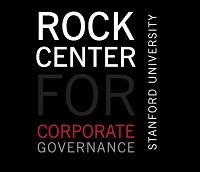Partner Mary Inman discusses SEC whistleblower reward program and Reenvisioning Whistleblowers as Forward Indicator of Risk at Stanford Rock Center “Whistleblowers, Ethics and Compliance” Event

On January 19, 2021, Constantine Cannon partner Mary Inman joined several esteemed co-panelists to discuss the recent amendments to the SEC Whistleblower program’s rules, SEC whistleblowers’ impact on securities law enforcement, and the nature and frequency of corporate whistleblowing in the “Whistleblowers, Ethics and Compliance” event organized by Stanford’s Rock Center for Corporate Governance.
The discussion kicked off with former SEC Commissioner and Stanford Professor Joseph Grundfest detailing the SEC whistleblower program’s success, noting the SEC has paid more than $700 million in awards to whistleblowers in the 10 years since its inception, thereby creating major incentives for people to step forward about violations of federal securities laws.
On the functioning of the SEC’s whistleblower reward mechanism and system, Steven Peikin, former Co-Director of the SEC’s Enforcement Division, explained that most of the biggest monetary remedy cases pursued by the SEC are FCPA violations. Thanks to new efficiency protocols on the back end, the pace at which awards are being made by the SEC has ramped up, and more people are receiving rewards with the quicker, expedited process. Mary added an increasing number of international whistleblowers are receiving awards for their roles in alerting the SEC to FCPA and securities law violations with a U.S. nexus occurring overseas.
Mary and Steven also discussed the significance of the timing and channel for whistleblowers to report violations. While the SEC’s program allows multiple whistleblowers to be eligible for an award in connection with the same matter, it is always preferable to be the first whistleblower to file a tip with the SEC because any subsequent whistleblowers will only be rewarded if they bring additional information above and beyond that included in the first whistleblower’s original report. Alive to the risk of subsequent whistleblowers, therefore, the first whistleblower will necessarily try and cover the waterfront by including all information about the wrongdoing in his/her SEC tip. To discourage whistleblowers from bypassing companies’ internal reporting mechanisms in favor of going straight to the SEC’s Office of the Whistleblower, the SEC, in determining the amount of an award qualifying whistleblowers will receive within the mandatory 10% to 30% award range, credits the fact that a whistleblower reported internally first as a plus factor justifying a higher percentage award. In recent years, around 80 percent of the whistleblowers supplying tips to the SEC have first reported their concerns internally.
The discussion tackled the experience and drawbacks of, and the motivation for, being a whistleblower. Rob Chestnut, former Chief Compliance Officer at Airbnb, explained that despite the big monetary awards, a lot of whistleblowers do not want to be one; whistleblowing only happens when they have tried to do something inside the company but have been ignored. Erika Cheung, one of the Theranos whistleblowers, related what she went through, painfully, and stressfully facing retaliation and intimidation from the company: “The incentives and the awards are great, but going through the process, that is so little of what you are thinking about.” Mary echoed Erika’s point, noting most of her clients are not motivated foremost by the money, but the money provides the possibility of a safety net to insulate them from the career loss many whistleblowers face due to the prevalence of industry blackballing or blacklisting. On the perils of being a whistleblower, Mary related that she considers it a professional obligation when representing whistleblowers to fully inform them of the parade of horribles that can ensue upon blowing the whistle.
Discussing what corporations can do on reporting violations, Rob Chestnut said we need leaders that welcome transparency, and great leadership is about creating a culture where whistleblowers would never be necessary. Mary confirmed the need for a cultural change within organizations that recasts the notion of who a whistleblower is: “Instead of seeing them as snitches and disloyal, we need to reconceive them as canaries in the coal mine who are the best early warning system and forward indicators of risk.” As support for her view that whistleblowers are among a company’s most valuable employees, Mary cited research from Professors Kyle Welch and Steven Stubbens showing that companies with active internal reporting hotlines are more profitable than those whose hotlines are silent, with them experiencing a decreased number of regulatory actions and lawsuits.
The discussion closed with each panelist being asked to provide one big takeaway from the event. Steve Peikin affirmed that the SEC whistleblower program is here to stay, noting whistleblowers have become a significant force that the regulator has come to rely on: “Big companies must treat those whistleblowers carefully and dismissing them is a very risky strategy.” Mary Inman described the SEC program as “a game-changer” and “the gold standard of whistleblower reward programs,” having inspired the adoption of similar programs both within the U.S., citing the Treasury Department’s brand new Anti-Money Laundering whistleblower reward program, and internationally. Erika Cheung concluded that people must understand that whistleblowers do care about the company they are working for. As such, it is important to try to understand what the whistleblower tries to communicate: “even if it could be costing on price, in the long run, it will be more rewarding.”
A video of the panel discussion can be found below:
Read More
- Securities Fraud
- SEC Enforcement Actions
- SEC Whistleblower Program
- With over $136 million in Whistleblower Awards in 2020, the SEC Amends the Rules of its Whistleblower Program
- Subscribe to our YouTube Channel
- Watch Our Other Constantine Cannon Attorney Interviews
Tagged in: International Whistleblowers, Multiple Whistleblowers and First-to-File, SEC Whistleblower Reward Program, Securities Fraud, Whistleblower Rewards,